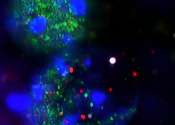Study highlights impact of aldehydes on DNA damage and aging
A team of researchers at Nagoya University in Japan has discovered that aldehydes are metabolic byproducts associated with premature aging. Published in Nature Cell Biology, their findings reveal insights into premature aging ...
Apr 10, 2024
0
40









